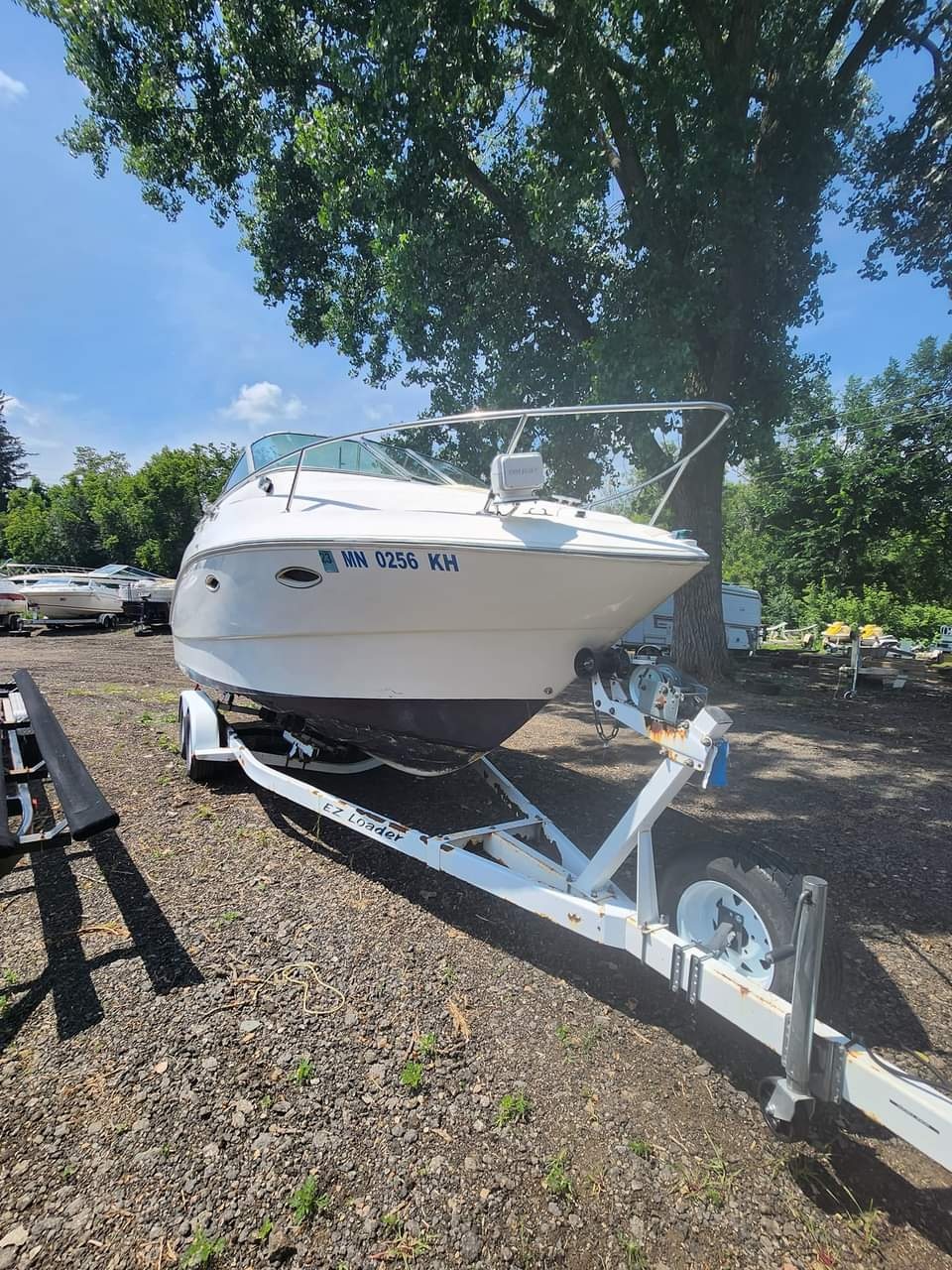Mastering Comfort and Stability on Choppy Lake Waters
Choppy lake waters test every boater’s skill and preparedness. This guide shares practical strategies to boost your boat’s stability and comfort as waves rise, ensuring your lake adventure remains safe, smooth, and enjoyable.
Balance Your Load
Distribute weight evenly and keep heavy items low to maintain your boat’s center of gravity and reduce rocking.
Adjust Speed to Waves
Slow down in rough patches to minimize bouncing and maintain control, improving both comfort and safety.
Wear Non-Slip Footwear
Footwear with good traction helps prevent slips when navigating a moving boat in choppy waters.
Check Weather Forecasts
Wind direction and speed directly influence lake conditions; pre-trip forecasts help you plan safer outings.
Mastering Comfort and Stability on Choppy Lake Waters

Larson 230 Cuddy Cabin Boat 24 Ft
4-8 Hour Rental Options • Up to 11 People
Discover the joy of exploring Lake Edmond on the Larson 230 Cuddy Cabin Boat. Perfect for relaxing cruises, fishing, and water adventures, this experience offers a memorable way to enjoy Oklahoma's scenic waterways.
Lake waters rarely sit still. They shift, rock, and challenge every boat daring to cross their surface. When choppy waves rise, steering a boat becomes a test of balance and preparation, where comfort and stability dictate not just safety but the joy of the venture. Whether you’re piloting a small fishing boat or a speedier motorcraft, knowing how to optimize your ride transforms unpredictable waters into manageable adventure.
Start by reading the water’s temperament. Choppy conditions often stem from wind pushing against the lake’s surface, creating restless waves that push and pull your boat. To stabilize, position yourself and weight evenly inside the craft—too much on one side invites unnecessary tipping. Distribute gear low and centered to keep the center of gravity grounded, allowing your vessel to ride the waves with less effort.
Adjust your speed according to the water’s pulse. Slowing down on especially rough stretches lets the boat absorb impact without bouncing violently, reducing strain on both boat and passengers. Keep your steering smooth and deliberate; jerking the wheel in reaction to every wave only magnifies instability.
Use your boat’s design to your advantage. Boats with deeper V-shaped hulls slice through waves, granting a smoother ride than flat-bottomed models, which tend to bounce more on choppy water. If you’re choosing a vessel or renting, keep hull shape in mind for lake adventures prone to gusty weather.
Enhance comfort with practical gear: padded seating prevents fatigue and helps maintain steady posture. Wear non-slip shoes to keep footing secure when moving around. And don’t ignore safety—life jackets snugly fit to your frame allow freedom of movement without sacrificing security.
Environmental factors also matter. Winds can shift suddenly on lakes bordered by hills or forests. Watching local weather trends and consulting forecasts before departure allows you to plan for calmer windows or prepare for tougher conditions.
Finally, anticipate the lake’s character not as a foe but a fierce companion. Its waves rise to challenge your craft, its breeze demands respect, and its surface invites mastery. With mindful preparation, practical techniques, and respect for nature’s moods, choppy waters become less a hazard and more an engaging part of your lake adventure.
Nearby Trips
All Adventures
Boat Charters
Water Activities
Adventures near Minocqua
Discover the unique and memorable adventures that make Minocqua special.
Frequently Asked Questions
How should I position myself to improve boat stability on choppy water?
Sit or stand near the boat’s centerline and keep your weight low. Avoid sudden movements that can shift the boat’s balance and increase the risk of tipping.
Does hull shape really make a difference in rough lake conditions?
Absolutely. V-shaped hulls are designed to cut through waves, offering smoother rides, while flat-bottom boats bounce more on choppy surfaces, making stability harder to maintain.
What’s the best time of day for boating on lakes prone to choppy conditions?
Early morning typically offers calmer waters before winds pick up in the afternoon. Planning trips accordingly can reduce exposure to rough waves.
Are there local regulations or safety practices specific to boating on Minocqua Lake?
Yes, local authorities require life jackets for all passengers and recommend checking wind conditions before departure. Also, be mindful of designated no-wake zones to minimize wake impact.
Can small, lightweight boats handle choppy waters safely?
Light boats require careful handling; balancing load and reducing speed are crucial. While more vulnerable than larger vessels, with proper technique and safety gear, they can still navigate choppy lakes.
What emergency equipment should I carry for choppy lake conditions?
Aside from life jackets, have a whistle, waterproof flashlight, first aid kit, and a reliable communication device like a marine radio or fully charged cell phone in a waterproof case.
Recommended Gear
Life Jacket
A properly fitted life jacket secures safety without compromising mobility, essential for any conditions.
Non-Slip Shoes
Footwear with good grip prevents falls on wet, unstable surfaces aboard the boat.
Padded Seat Cushion
Adds comfort on rough waters by absorbing shock and reducing fatigue.
Windbreaker Jacket
Protects against chilling winds that often amplify waves and discomfort.
Local Insights
Hidden Gems
- "Crystal Bay overlooks offering panoramic lake views"
- "Quiet western coves perfect for exploring without waves"
Wildlife
- "Ospreys actively hunt over the lake"
- "River otters play along shorelines"
- "Occasional bald eagle sightings"
History
"Minocqua Lake has long been a center for logging transport in the early 1900s, with remnants of old piers still visible, connecting the area’s natural beauty to its industrious past."
